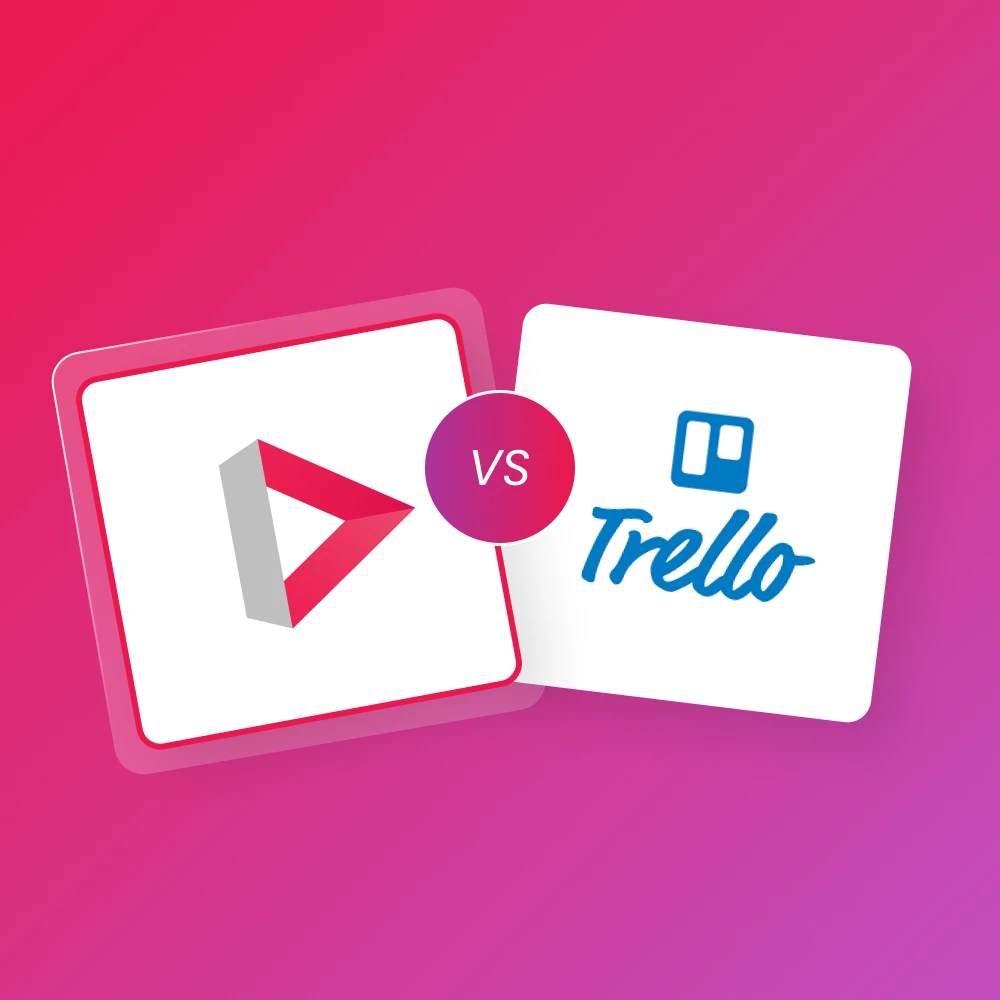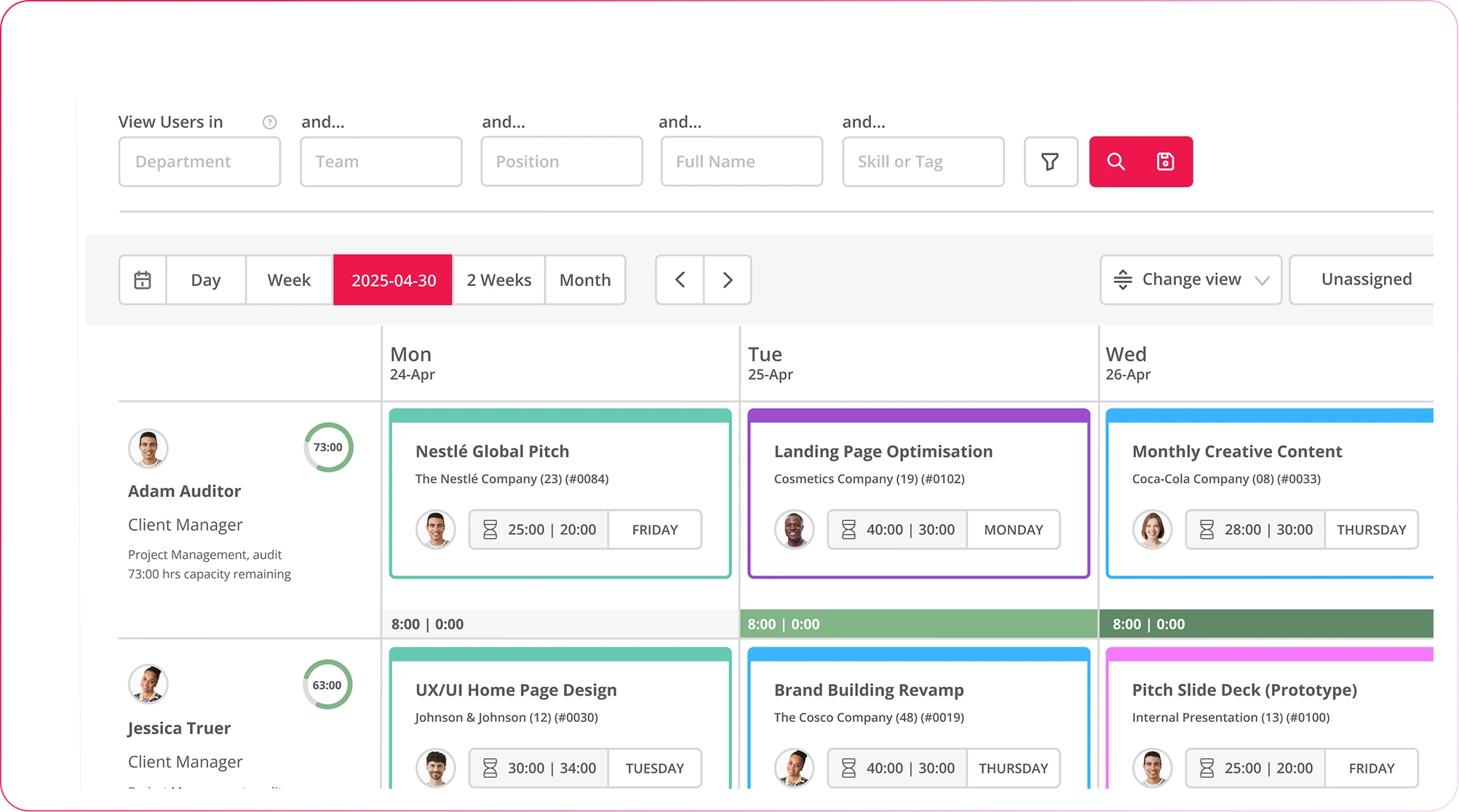Table of contents
Subscribe to our newsletter
Thank you! Your submission has been received!
Oops! Something went wrong while submitting the form.
Related Posts
No items found.


“Have you checked the Trello board?”
That’s right up there with the most common sayings at professional service companies, along with “Do your timesheets” and “The client wants us to move the project out by a month”
With all the project plans, client requests, broken workflows, and changing deadlines, software like Trello has been the saving grace for so many companies. In fact, Trello is still the go-to project management tool for some.
But not anymore. While Trello is still a really great piece of software when it comes to managing tasks, there are so many more options if you’re looking for a tool that can do more than just that.
In this piece, we’ll dive into some of the top Trello alternatives and explore what they can do for you.
We'll also talk about the benefits of all-in-one platforms like Magnetic, which can streamline your entire workflow with multiple features including project management.
Ready to find the perfect project management tool? Let's get started!
Trello has become one of the most well-known brands in project management, but it might not be the perfect fit for every team. While it's great for simple tasks and smaller projects, it can fall short when it comes to the complex demands of professional services firms and agencies. Let’s explore why.
It’s limited for larger projects and teams: Trello's simplicity can be a drawback for larger projects with multiple moving parts and team members. It can become difficult to manage complex workflows and dependencies.
Weak reporting and analytics: Trello lacks robust reporting and analytics features, making it challenging to measure team performance and identify areas for improvement.
Integration and customisation challenges: Integrating Trello with other tools and customising it to fit your specific workflow can be tricky. This can hinder productivity and efficiency, which is the opposite of what it’s meant to do.
Basic collaboration tools: While Trello allows for basic collaboration, it falls short when it comes to in-depth comms and file sharing. This can lead to many misunderstandings and delays.
Time management drawbacks: While you can add due dates to cards, Trello doesn't offer robust time tracking or resource management features. This can make it challenging to estimate workloads and allocate resources effectively.
Choosing the right project management tool is a big decision – you’re in for at least three months of trial, error and change management. And if you make the wrong choice, you’ll need to do it all again. So it’s really important to make sure that you research the features of each of your options, and weigh them up against each other, as well as your needs.
Here are some features you should look out for:
Magnetic is more than just a project management tool. It’s project management, Customer Relationship Management, resource management, finance management, time management, timesheets, automation and reporting – all in one!
It's got everything you need in one place, so you can stop juggling different tools and start focusing on what really matters.
Magnetic is designed to make everything smoother and more efficient. With features like comprehensive project tracking, real-time reporting, and customisable workflows, it fits right into your existing processes Plus, it integrates easily with your favourite tools and has a user-friendly interface that keeps everyone on the same page. Whether your team is in the office or remote, Magnetic helps you stay connected and in control, making sure projects are delivered on time and within budget.
Magnetic gives you a bird's eye view of your entire business. With real-time insights into project performance, team productivity, and profitability, you can quickly identify areas for improvement and make data-driven decisions. It's like having a personal business coach that's available 24/7.
By streamlining operations, finance, and project management into one powerful platform, Magnetic empowers businesses to make data-driven decisions that boost profitability. With features like in-depth financial tracking, time management, and resource allocation, you can identify opportunities to increase revenue, reduce costs, and optimise project performance.

If we were to pick a top five of Trello alternatives, of course we’d put Magnetic up top. But what does the rest of the top five look like?
Asana is like Trello's grown-up cousin. It's better for bigger projects and teams, with more features like due dates and subtasks. While Trello is great for simple to-do lists, Asana can handle more complex workflows. But if you're in a professional services firm, Magnetic combines project management with tools for clients, finances, and your whole business, making it a more powerful choice.
Trello is basic, yes. But on the upside, it’s really easy to use, especially for small projects. Much like Asana, Monday.com is a bigger, better and shinier version of Trello, with more features for bigger teams. But once again, Magnetic is more of an all-rounder in the world of professional services. It's built for your business, with tools to manage projects, clients, and finances all in one place.
Wrike has a bit more muscle, and offers more advanced features like Gantt charts and workload management. It's kind of like the middle ground between Trello and Magnetic. Magnetic, on the other hand, is specifically designed for professional services firms, offering a more complete business solution beyond just project management. But we’re not knocking Wrike simply because this is our blog – it’s a really great piece of software, and one that you should absolutely consider!
ClickUp offers everything Trello does and more. It includes essential features as well as advanced tools like time tracking, goal setting, and a document editor. Trello excels with straightforward projects, and Magnetic focuses on business management, but ClickUp covers all bases. It's a solid choice if you're looking for a comprehensive tool, though it might be a bit much if you're seeking simplicity.
You can’t walk the walk if you’re not wearing the right shoes, and you can’t manage the project if you don’t have the right software. Don’t use Trello because everyone else is using Trello, use Trello if you think it’s the right fit for you.
Here’s a five-step guide to choosing the right project management tool for your business.
But, while these costs can add up, they could be worth it if your new tool offers better features, and improved efficiency, and aligns more closely with your growing business needs. It’s all about finding the right balance between short-term costs and long-term benefits.
Opting for Magnetic over Trello might seem like a bigger investment initially, but the long-term benefits can easily outweigh the costs. While Trello’s low-cost plans are attractive, they lack the depth needed for growing professional service firms. Magnetic, though pricier, combines project management, client management, and financial tracking into one platform, potentially saving up to 30% on software costs by reducing the need for multiple tools.
Trello has been a popular choice for a long time – it’s not hard to see why. However, there are other options out there, especially if you’re looking beyond project management alone.
By carefully considering your business needs and exploring alternatives like Magnetic, you can find a tool that does more.
Magnetic empowers your team, streamlines your operations, and drives long-term success with a host of features that make it a one-stop shop. Take the leap and discover the transformative potential of Magnetic, the all-in-one business tool for professional services companies.
Trello, while popular, has limitations for professional service firms and agencies. It struggles with complex projects, large teams, and lacks robust reporting, integrations, and in-depth collaboration features.
.svg)
Comprehensive project tracking: Real-time updates, visual dashboards, and timelines. Robust reporting and analytics: Insights into project performance and team productivity. Customisable workflows and integrations: Adapt to your existing processes and connect with other tools. User-friendly interface and collaboration tools: For seamless teamwork.
.svg)
Magnetic: All-in-one business management with CRM, resource management, finance, time management, automation, and reporting. Asana: More features for larger projects and teams but lacks Magnetic's comprehensiveness for professional services. Monday.com: Offers more features than Trello, but Magnetic provides a business-specific solution. Wrike: Includes Gantt charts and workload management but lacks Magnetic’s full business suite. ClickUp: Offers more than Trello but Magnetic focuses on professional services with essential business tools.
.svg)
Assess business needs: Team size, project complexity, and required features. Evaluate features and scalability: Check integrations and future growth potential. Use free trials and demos: Test the tool and gather team feedback. Involve your team: Include the team in the decision-making process.
.svg)
While switching involves upfront costs like training and data migration, it can lead to long-term benefits. Magnetic, despite being pricier than Trello's basic plans, can improve efficiency, streamline workflows, and potentially save costs by replacing multiple tools.
.svg)
Migrating from Trello to Magnetic is straightforward. Magnetic provides onboarding support to bring your projects, tasks and team data seamlessly.